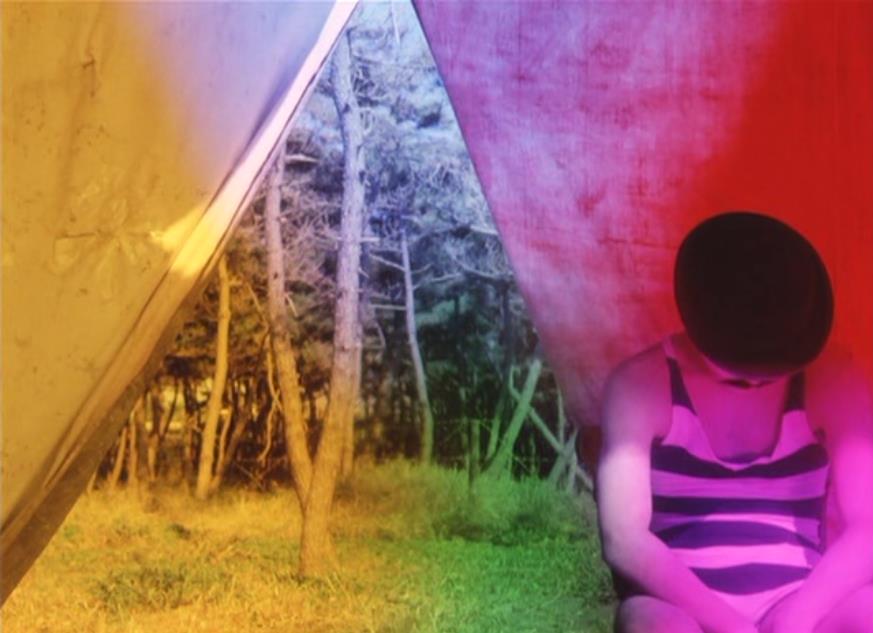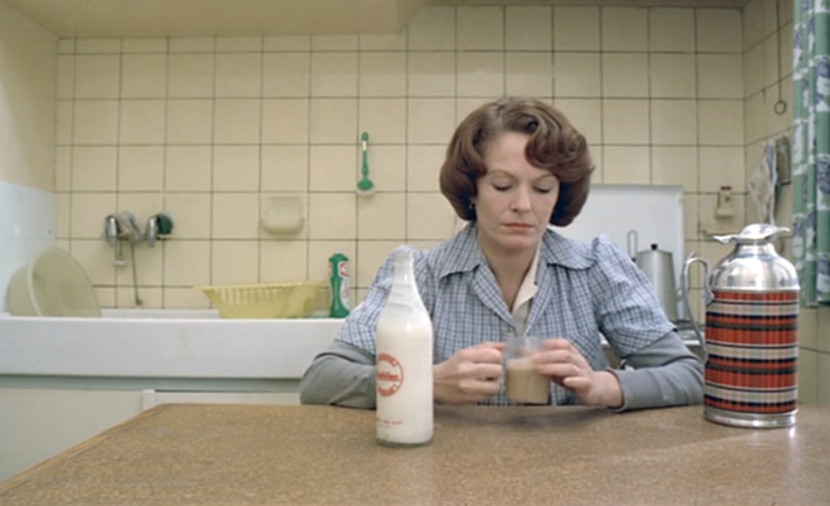
As of early December 2024, with only a few weeks left in the calendar, every single one of the ten highest-grossing movie releases of the year are sequels based on a pre-existing intellectual property — a historic first in cinema history. There’s no denying it, original ideas feel in alarmingly short supply in today’s cinematic landscape. And especially in a moment in time where major studios shamelessly recycle ideas and lean heavily on brand recognition while pumping out corporate-mandated, assembly-line studio cash-grab after another, coming across a truly unique movie that dares to break from the mold has become an increasingly rare novelty.
To help, today we’re rounding up a collection of movies that veer off the beaten path and are thoroughly distinct in their own way. Expect the unexpected watching the following titles, from zany dinner meals that slowly curdle into nightmare fuel to blood-curling Buddhist rituals and even a magical portal that will transport you straight into John Malkovich’s mind, 15 minutes at a time. As always, narrowing down our choices meant that difficult choices were to be made, which meant snubbing the likes of “Eraserhead”, “House”, “Spirited Away”, “Brazil”, “Tetsuo: The Iron Man”, “Mindgame”, “Adaptation”, “Green Snake”, “Pi”, “Upstream Color”, “Funeral Parade of Roses”, “It’s Such a Beautiful Day”, among countless others. Let us know what other gems we missed, and what we got right in the comments below.
1. The Exterminating Angel (1962)

How’s this for an elevator pitch: A bunch of hoity-toity socialite aristocrats gather to have a little dinner party at a lavish mansion only to find themselves physically unable to leave and held hostage against their will by a mysterious force beyond their comprehension. Leave it to cinema’s premiere populist surrealist and certified iconoclast Luis Buñuel to return to Cannes after his Palme d’Or-winning “Viridiana” with an even more mean-spirited, sharp-witted, and incendiary takedown of the one percent.
The pompous, frivolous lifestyle of the filthy ultra-rich and the hypocrisy of the bourgeoisie were common targets of the Spaniard director, and he more than made his nonconforming tenor clear in “The Exterminating Angel”. However, it’s how the soon-to-be-exiled director ingeniously fleshes out his anything-goes premise and keeps the viewer at bay by steadily ratcheting up the tension, peppering in pointed social commentary, and throwing curveballs at every turn that elevates this scabrously funny, all-night schadenfreude into cinematic lightning in a bottle. Buñuel never settled for less than exceptional, and “The Discreet Charm of the Bourgeoisie” and “The Phantom of Liberty” are both well worth tracking down as well.
2. Daisies (1966)

Avant-garde female director Vera Chytilová ripped open film grammar, pushed the formal innovations of the Czech New Movement to their breaking point, and delivered a rip-roaring rebuke to 20th-century patriarchy with this anarchic, psychedelic, and bracingly feminist political manifesto that ruffled the feathers of every movie censor stateside and became an improbable cult classic overseas.
A 76-minute whirlwind of sugar-fueled chaos and candy-colored sensory overload, absolutely nothing is off the table in “Daisies”, which vividly recounts the chaotic misadventures of two whimsical young women named Marie (Jitka Cerhová and Ivana Karbanová). The rebellious duo ditch their dates, wreak havoc, infiltrate a banquet hall reserved for government officials, and stuff themselves with anything they get their hands on (from fondue and cupcakes to crepes and eggs) in a hedonistic spree that flips the bird to the powers-that-be in Communist Czechoslovakia. It’s an infectiously joyful rollercoaster with a pointed message that rages against the machine and an even more audacious visual style to match.
3. The Color of Pomegranates (1969)

Singled out for praise by Martin Scorsese and often billed as the kind of unconventional biopic for people who usually hate biopics, Sergei Parajanov’s radical take on the life and times of renowned 18th-century Armenian poet and musician Sayat-Nova completely discards standard narrative structure and instead engulfs the viewer on a gut level with a nonstop barrage of stunning visuals, impeccable compositions, extremely long takes and static set pieces inspired by Armenian folklore.
‘Every frame is a painting’ has become the single most overused crutch phrase in film criticism, predictably trotted out every time a movie happens to have eye-popping visuals. And yet, every scene in “The Color of Pomegranates” is such a remarkable and immaculately staged feast for the eyes that the tired description feels thoroughly justified here. The narrative structure, such as it is, recounts key chapters in Sayat-Nova’s life, from his childhood and life as an artist and priest to his persecution and death. However, Parajanov approaches it in such a bold and deliberately obtuse manner with little to no dialogue, that it isn’t hard to imagine Soviet censors struggling to make sense of it before ultimately banning the film stateside altogether. Pro tip: Just go with the flow and let the visuals wash over you.
4. Pastoral: To Die in the Country (1974)

A relentlessly inventive, surreal piece of meta-cinema that reads like putting Federico Fellini, Nobuhiko Obayashi, and Alejandro Jodorowsky all into a blender, Shûji Terayama’s “Pastoral: To Die in the Country” presents a nesting doll with multiple timelines and layers of narrative stacked one on top of another in a way that makes the film-within-a-film narrative structure of “8½” feel like mere child’s play.
Ostensibly the story of a young tortured filmmaker facing creative block while trying to put the finishing touches on his ongoing movie — a semi-autobiographical coming-of-age tale that draws from his own childhood memories growing up in a secluded town in rural Japan — “Pastoral” uses this initial framework to zigzag between crisscrossing slice-of-life vignettes and stories built within stories that ebb and flow like a hazy dream and slowly opens up into a potent meditation on the intricacies and unreliability of the human memory.
At some point, reality and fantasy become nigh indistinguishable, with the director’s stand-in character delving deep into the well of his subconscious mind in search for inspiration and perhaps a chance to exorcise his inner demons and let go of the past (chiefly, coming to terms with the premature death of his father and dealing with his troubled relationship with his oppressive mother). It’s a hard nut to crack, sure, but the breathtaking landscape vistas, vivid use of color, and hypnotic compositions are worth the price of admission alone.
5. Jeanne Dielman, 23, Quai du Commerce, 1080 Bruxelles (1975)

As far as premises go, “middle-aged Belgian widow peels off potatoes and rigorously carries out her daily household chores over three days” may admittedly not sound like the makings of a riveting watch that will keep you glued to the screen from start to finish, let alone the greatest movie of all time.
But there’s a reason why endless praise has been lumped upon this three-and-a-half hour 1970s avant-garde touchstone by feministic trailblazer Chantal Akerman. The film endures today as a cinematic rite of passage among Criterion Channel-dwelling cinephiles and most recently became a lightning rod of contention after unexpectedly edging out the likes of “Vertigo” and “Citizen Kane” for the #1 spot in the latest Sight & Sound critics’ poll.
It’s no backhanded compliment to say that “Jeanne Dielman” turns boringness on its head by making the viewer feel every minute of dull repetition and pent-up frustration experienced by its dysfunctional title character (Delphine Seyrig). As a matter of fact, the infamously unhurried pace of “Jeanne Dielman” that tends to irritate and scare off unassuming viewers is not really a bug, but a deliberate artistic choice. All in all, it’s a unique experience that leaves a lasting impression and rewards anyone willing to invest the time and energy.